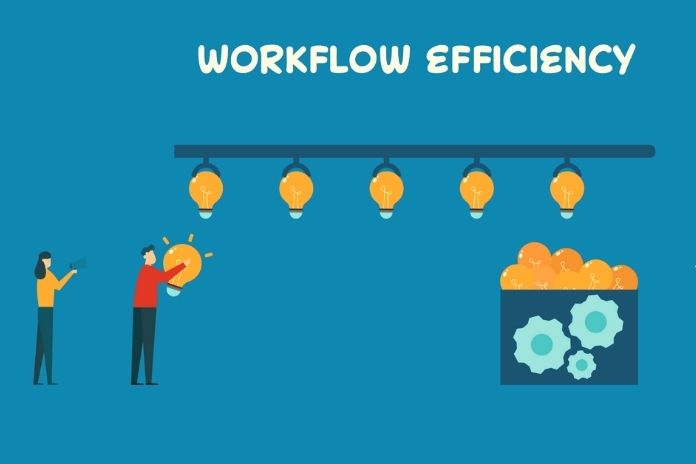Defined Workflows: The complexity of marketing is overgrowing: Today, over 50x more marketing tools than ten years ago. So it’s no wonder that the efficiency and thus the satisfaction of the employees suffer. We will therefore show you how defined workflows can help.
Since 2011, the martech landscape has grown by 5.233 percent, leading to increased use of new technologies and thus more inefficiency and dissatisfaction.
How do you stay connected when teams and tools are more distributed than ever? According to researchers, today’s enterprise workers switch between 10 applications an average of 25 times a day at work, resulting in interrupted communications, decreased efficiency, and duplication of the piece.
In other words, instead of moving work forward effectively, many employees spend their time going back and forth, moving work from one tool to another, struggling to collaborate effectively.
The trend shows that employees are working more and longer hours. Eighty-seven percent of all employees work longer every day but are less and less concerned with the actual work.
Administrative work takes up such a large proportion that several days a week, there is no time to do meaningful work instead of searching for information, switching between the different tools, and constantly changing priorities.
Also Read: Employee Self Service: 4 Tips For Introducing The Tool
Defined Workflows: The Solution – More Structure
To increase efficiency and satisfaction, a company needs structure. By introducing predefined workflows, companies can make their teams more adaptable.
A workflow is a complete process that helps teams achieve goals by providing the right people with the correct data at the right time.
If the individual steps are defined, employees can run the workflows repeatedly without restarting each time. Fixed workflows can increase success and minimise work-related work.
Employees are given the data, information, and resources they need to get started right away. Everyone knows at a glance when specific tasks have to be completed. In addition, new employees are trained much faster and find their way around quicker.
How Can I Develop Predefined Workflows?
To develop meaningful workflows, three steps are necessary.
Planning
The first step is planning. This means that the project team collects all information without direct structure. With this brainstorming, all relevant topics, hooks, or designs needed for the later process are gathered right at the beginning.
In this step, the project manager also assigns tasks to individual employees based on their capacity, efficiency, and skills.
2nd Execution
After assigning the tasks, the team gets to work – creating, checking, and improving tasks. In this phase, the project manager records progress in status reports and identifies problems at an early stage.
Verification
In the last step, managers have the opportunity to check the individual workflows. Does everything work as desired? Are all texts free of typos? Does the workflow meet the high standards? If you notice that an error has crept in, the workflow goes back one step.
With Asana To Defined Workflows
In the free ebook, Asana experts analyse how marketing teams at top companies worked and looked for trends, themes and similarities. The result is a seven-part framework for workflows that is universally applicable. Find everything you need to know about marketing team problems, marketing workflows, and much more in the free ebook.
Asana easily integrates with tools companies already use. This makes, for example, connecting to Google apps (e.g., Google Calendar, Gmail, Microsoft Teams, and Outlook), communication (e.g., Slack), file sharing (e.g., Dropbox), development (e.g., Github), or reports (e.g., HourStack) easier and thus also the achievement of significant results.
Convince yourself of Asana now, get your free e-book and bring more structure to your company.
ALSO READ: Project Management Tool Under Test: What Can Cling Do?

